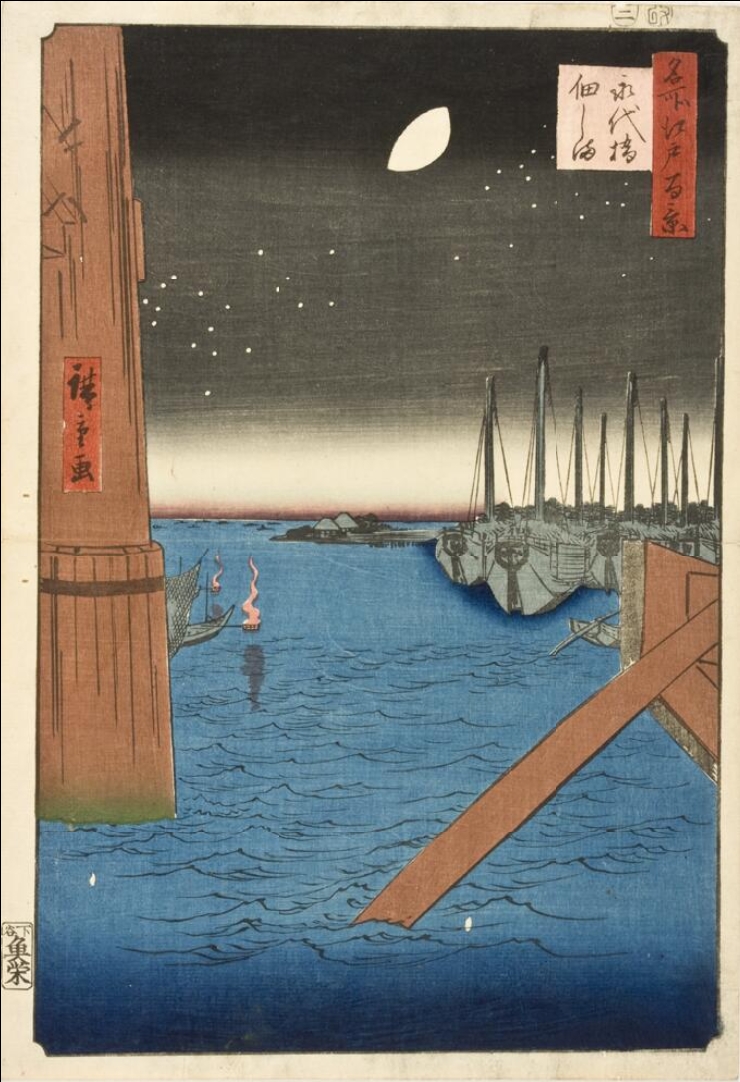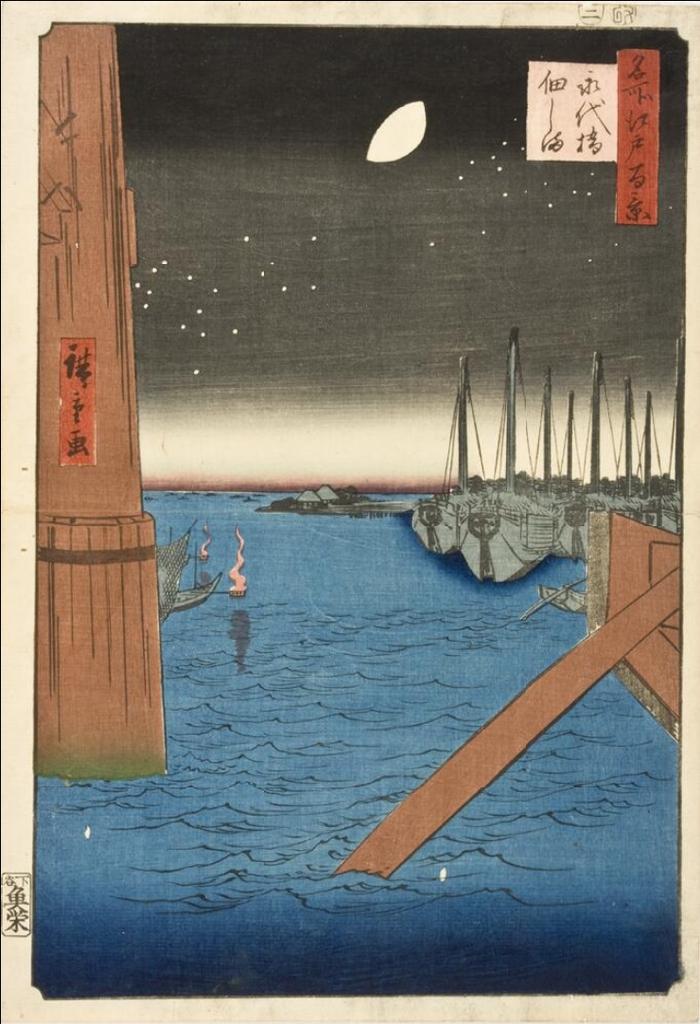Manthan / 攪乳海
Director: Vibha Galhotra, 維巴.迦霍特拉
Duration: 00:10:53; Aspect Ratio: 1.778:1; Hue: 235.043; Saturation: 0.043; Lightness: 0.511; Volume: 0.109; Cuts per Minute: 3.029
Summary: Amidst the contentious relationship between tradition and modernity that paradoxically unfolds across India, Manthan refers to a legend from Hindu mythology in which gods and demons churn the ocean to extract the nectar of immortality. In continuation with Vibha Galhotra’s work on the political and economic impacts of water, the speculative performance in the film churns deleterious waste out of the severely polluted river Yamuna that flows through Delhi. The grey riverscape is antithetical to the sacredness of the river referenced by the practice of traditional scriptures. The individual frames showing a decayed and dying river hint at the broader narrative of our apathy towards nature and imminent ecological catastrophe.
「攪乳海(Manthan)」以印度各地傳統與現代之間的膠著與矛盾為脈絡,指涉天神與魔鬼攪動海洋以獲取永生甘露的神話故事。延續維巴.迦霍特拉對於水的政經影響力的探索,此作品呈現了德里重度污染的亞穆納河裡的有害廢棄物,灰色的河景與傳統典籍中河流的神聖性形成強烈對比。各個獨立的影像呈現潰爛、瀕死的河域,隱喻我們對於大自然的冷漠以及迫在眉梢的生態浩劫。

The reflection on the Yamuna river that the film opens with immediately transports the viewer to an alternate reality, reminiscent of tropes from science fiction, derealising the boat, made in accordance with the norms of the local community that lives on its banks from thermocol weighed down by gunny bags. The person rowing the boat is wearing a scuba-diving suit, covered from head to toe, gesturing towards a possible future where it would be toxic to come in contact with the water altogether because of the toxic chemicals that are dumped into the river. The reflection also deceives the viewer into perceiving what is essentially a means of transport across the river for the economically weak section of the society that lives in proximity to the river, as something out of this world, a fine object, just as the facades of the city deceive us and hide the ugliness of its back alleys. Also, Vibha Galhotra's father used to tell her when she was child, "the river is a reflection of you", drawing from folklore that insisted oneness with the natural world and rituals that included cleansing of sacred objects with the water from the holy river.
影片開場時的亞穆納河倒影將觀眾傳送進了一個另類現實,讓人想起科幻小說
中的比喻,讓船彷彿不是現實之物。畫面中的船則是以熱塑性聚合物製成,並
以麻袋布增加重量,以符合當地河岸居民的需求。划船的人穿著能包覆全身的
潛水服,暗指向一個可能的未來:有毒化學物被傾倒入河,使水質產生毒害。
這個倒影也用來欺騙觀者,讓他們認為,這個用來過河的、本質上屬於生活在
河流附近的經濟弱勢群體的交通工具,是一個絕妙的、精美的物體,正如同城
市用它的表象欺騙了我們,掩蓋了其暗巷小道裡的醜陋那樣。此外,維巴.加
爾霍特拉(Vibha Galhotra)的父親也常在她小的時候告訴她,「河流是你的倒
影」——而這個說法來自於將自然世界與人類視為共同體的民間信仰,其儀式
囊括用聖河的水淨化聖物。

The mythological incident “Samudra manthan” (churning of the ocean of milk) is the background for the work. Miniature paintings from the past often show the mythological episode as taking place in a scene filled with rippling water. Shapes of objects appear blurred because of the moving waves, thereby suggesting material metamorphosis.
運用乳海攪拌(Samudra manthan)的神話為背景。在過往的細密畫(miniature)處理中,乳海攪拌的場景經常充滿了水面波盪的意象。波盪使物體的外型模糊,提示著物體的變形(metamorphosis)。

It is illegal to cultivate anything on the banks of the river. But tradition holds that the banks are most fertile when the water recedes. The locals grow vegetables on these banks which they sell at markets in the area, near Majnu Ka Tila, a neighbourhood in North Delhi. The local government bodies turn a blind eye to such cultivation, even when they know that the soil is contaminated and toxic. At the time that the film was made, construction was ongoing for the Millenium Bridge, on the other side of the river. The Millenium Bridge is a seemingly spectacular, assymetrical structure connecting Wazirabad to East Delhi. After the bridge was inaugurated, its effects on the riverbed were acknowledged.
在河邊種植任何東西卻都是違法的。然而,由於傳統相信退潮後的河岸最為肥
沃,當地人還是在這些河岸上種植蔬菜,然後在北德里附近的 Majnu Ka Tila 附
近的市場裡出售。當地的政府機構即便知道這裡的土壤已受毒物污染,卻仍對
這些種植行為視而不見。在拍攝這部電影時,河對岸的千禧橋正在建造中。千
禧橋看起來頗壯觀,用不對稱的結構連接瓦濟拉巴德和東德里。大橋的結構對
河床造成的影響,終在啟用典禮以後獲得承認。

The reflection of the buildings on the riverbanks look modern and clean, like any city, once again reflection revealing the deceptive reality of urbanity.
建物在河邊的倒影看起來既現代又乾淨,就像其他任何一座城市一樣。而這倒
影則是再次揭露了都市中內含的現實騙局。

When the camera focuses directly on the buildings alongside the river, unlike in the reflection we see plastic waste on the banks. The film was shot at the time of Durga puja, a prominent Hindu festival. During the festival, communities that live in the area make idols of deities from clay that are to be submerged in the river as part of the festival. But along with this, the religious community also submerge objects from their shrines at home, most of which are made of plastic, as they believe that they are powerful spiritual entities. Along with this, other plastic object, such as wrappers of incense sticks are also thrown into the river. Every other month there is a collective ritual associated with the river which leads to such instances of dumping waste into the river.
當相機直接聚焦在河邊的建物上,我們就會看到與水中倒影不同的塑膠廢棄物
堆積在河岸上。這部影片是在著名的印度教節日「杜爾加女神節」(Durga
puja)期間拍攝的。在節日期間,居住在該地區的社區居民會用粘土製作神像,
並在節日期間將神像沉浸河中。不過,不只神像,宗教團體也會在女神節時將
自己家神龕中的物品(大多是塑膠製品)沉至河底,因為他們相信這些物品都
是強大的靈體。與此同時,其他像是線香包裝紙這類塑膠物也會被扔進河裡。
這種與河流相關的集體宗教儀式每兩個月就舉辦一次,也造成了人們向河流傾
倒廢物的情況。

If we look at the older Kangra miniature paintings, the Yamuna river was always brown, not blue or green as water bodies are in popular imagination. In this shot we see the brown water mix with the water released into the river from drains of small scale industries.
在早期的岡格拉微型畫中,我們可以看到亞穆納河總是棕色的,而不是大眾想
像中的水體那樣呈現藍色或綠色。在這個畫面裡,我們看到棕色的河水其實混
雜著從排水溝排放到河流中的小型工業廢水。

The camera zooms in on to the contaminated drain water from the Najafgarh drain.
鏡頭推進,停留在納傑夫加爾下水道所排出來的污水。

Vibha Galhotra had hired actors to row the boat in their scuba suits. But the actors were not able to manage the indigenous boat made of thermocol, and were afraid of falling into the river, or developing skin conditions as a result. The artist was not able to manage the boat either. At this moment during the production of this work, some farmers from across the river approached them and said they would be interested in being part of the performance. They were able to navigate the boat expertly and became part of the work.
維巴.加爾霍特拉本來聘請了演員穿著潛水服划船。但是演員們無法操控這些
以熱塑膠為原料的土製船,也害怕不小心掉入河中而得到皮膚病。就連藝術家
也無法操控這些船。但就在拍攝這部作品的當下,河對岸的幾位農民走近他們
,說他們有興趣參與演出。他們能夠熟練地駕駛船隻,也因此成為作品的一部


The composition of Hiroshige, "Tsukuda island from Eitai bridge"(1857).

The composition of Hiroshige, "Tsukuda island from Eitai bridge"(1857).

The bridge for the Delhi metro is seen in the background and the pillars of the bridge are firmly anchored to the river.
在背景中可以看到德里地鐵的橋,橋的柱子牢牢地固定在河中。

The arial shot shows the expanse of the river in comparison to humans who try to navigate it, as we see plastic debris on the shores indicative of human activity that is choking the river.
在空拍的畫面裡,河流本身與在其中試圖航行的人類比起來顯得寬闊許多,而
海岸上的塑料碎片則表明人類活動正在扼殺河流。

Only catfish survive in the Yamuna anymore. It has become too toxic for any other kind of animal life. The bubbles indicate life underneath the surface of the waterbody.
現在只有鯰魚能在亞穆納河生存。對於任何其他種類的動物生命來說,河流的
毒性太強,而河面的泡泡則代表河水表面下有生命體。

There is a cremation ground close to the river which attracts scavenger birds over it with the cries of death. There are also dead animals in the river. Death is all around.
河流附近的火葬場吸引了食腐鳥,迴盪著死亡的叫聲。河裡也有死掉的動物。
死亡無處不在。

The performance was choreographed with a shroud based on a set of instructions that the artist gave the actors.
這場表演是透過藝術家對演員下達一系列指令,以裹屍布進行動作編排。

We finally see the drains that empty into the river, as the film moves away from the riverscape to the source of its condition. This is the infrastructure that aids the polluting of the river, without required oversight from local authorities when it comes to untreated sewage from small and large scale industries. In conversations with experts on water management during the research towards this film, Vibha Galhotra realised that there are simple solutions to clean up the river, but poor planning and corruptions aids this continuous destruction of a water source that would otherwise be a resource. People bathe in the sewage as the river is still regarded holy and is relevant to rituals.
隨著電影從河流景觀轉移到污染的源頭,我們終於看到了排入河流的排水溝。
這項基礎設施惡化了河流的污染,而藉此排放小型和大型工業的未處理污水時
,也無需地方當局的監督。在這部電影的前置研究期,維巴.加爾霍特拉曾和
水資源管理專家交流,並意識到,儘管用簡單的方案便能解決河流污染,但糟
糕的規劃和官員的腐敗卻助長了水資源的破壞。人們在污水中沐浴,因為這條
河仍然被認為是神聖的,並與儀式的舉行息息相關。

After the churning of the ocean of milk, “the milky water of the agitated deep turned into clarified butter by virtue of those gums and juices.” (Mahabharata). In this instance, the white substance that we are looking at is waste water discharged into the river and foam that is difficult to remove.
在乳海攪動之後,「從那大海中產生了水乳,它與上品的汁液混合之後,又從這濃乳中誕生了清奶油。」(Mahabharata, 1.16.27)
而在此處,視覺中看見的白色物質,乃是上游排放而下的廢水與難以消除的泡沫。

The crew that filmed this work had stomach aches and could not eat after spending so much time close to the drains. One drain in view is letting out its waste into the river. The drain that is currently dry is opened during one part of the year, and at that time it is impossible to be anywhere close to where the shot is taken from because of the foul smell. The floating insoluble chemicals transform the river into an inorganic substance. The froth we see is detergent and chemical mixed together.
拍攝這部作品的工作人員待在下水道附近好一段時間後,開始出現胃痛與無法
進食的狀況。畫面中的一處下水道正在將廢物排入河中。目前乾涸的這個下水
道會在一年中的特定時間打開,而這時散發出的惡臭則使人完全不可能靠近拍
攝地點。漂浮的不溶性化學物質將河流轉化為無機物,而我們看到的泡沫則是
洗滌劑和化學藥物的混合物。

The performers cover the river with a shroud, indicating its ongoing demise. Then top layer of the water is more or less clean, but within five minutes of the shroud laying on the surface of the river, the toxic waste seeps into the white shroud, as if the dead body is blending in with the shroud. The metaphor of death is important to this work, as the river is considered to be a living entity in many states in the country. When the artist was young, and her father was working in Yamunanagar in Haryana, on weekends the entire family will have picnics on the riverside. The river was beautiful and thriving at the time. In 2010 she visited the part of the Yamuna that flows through Delhi and was saddened that the river on first appearance comes across as open sewage. She then realised the complexities of inter-state disputes over water and questions of ownership.
表演者用裹屍布蓋住河流,暗示它正在消亡。雖然上層的水算是相對乾淨的,
但在裹屍布鋪在河面上的五分鐘內,有毒廢物就滲入了白色的裹屍布中,彷彿
屍體正與裹屍布融為一體。死亡的隱喻對這件作品很重要,因為這條河在該國
的許多州都被認為是一個有生命的實體。藝術家年輕時,她的父親在哈里亞納
邦的亞穆那加爾工作,週末全家都會在河邊野餐,而那時的河流美麗且生命力
旺盛。 2010 年,她造訪了亞穆納河在德里的流域,並為河流看起來就像是露
天污水溝而感到難過。她接著意識到國家之間爭奪水資源的複雜性,並開始質
疑水源的所有權問題。

“After a while, the mild Moon of a thousand rays emerged from the Ocean. Thereafter sprung forth Lakshmi dressed in white, then Soma, then the White Steed….” (Mahabharata). Four men are seen here soaking a piece of pure white cloth into the polluted black water. The cloth then briefly takes on the physical appearance of the celestial White Steed in the mythology.
「從大海中生出了月亮,其光線似有百千之數,華光熠熠,分外皎潔,閃爍著涼爽的清輝。接著,從清奶油中產生了吉祥天女,身著乳白衣。然後,又產生酒女神和一匹乳白色的神馬。」(Mahabharata, 1.16.33-34)這邊可以看見四位男子以一塊淨白的布面泡入受污染的黑色水體中,且通過布料的物理性質,彷彿短暫地形塑出了神話文獻中「神馬」的白色軀體。

Manthan begins. The divine/demonic enterprise of churning the ocean to extract the elixir of life is inverted in this film to the extraction of poison from a dead body that is the river. In the Hindu scriptures, the Manthan was the only instance of collaboration between the gods and the demons. Once as part of an exhibition the artist presented water from the Yamuna in a test tube, almost as if it were a sculpture. She had to seal the test tube with a cork because of the foul smell emanating from the water. But overnight, the test tube exploded because of the toxic gases that were being released by the water. The shroud in this performance was dried until it was just the fabric with toxic residue on it, and this was encased in resin, equating the shroud with the body of the river. The length of the fabric lying on the riverbanks reminds one of the shape and weight of a human body.
開始攪乳海。攪動海洋以提取長生不老藥的神聖/魔鬼事業在這部電影中被倒置
,成了從屍體——即河流本身——中萃取毒藥。在印度教經典中,攪乳海是神
與惡魔合作的唯一實例。某次,在一個展覽中,藝術家以幾近雕塑的方式,在
試管中展示了來自亞穆納河的水。由於水中散發出難聞的氣味,她不得不用軟
木塞密封試管。但一夜之間,試管就因水釋放出的有毒氣體而爆炸了。本場表
演用的裹屍布經過風乾後,成了一塊殘留有毒物質的織品,再用樹脂包裹起來
,使得裹屍布幾乎就等同於於河流的屍身。河岸上織物的長度讓人聯想到人體
的形狀和重量。

After the performers have completed churning of the polluted ocean of milk, the white cloth which has soaked up the polluted liquid is wrung dry and rolled into a pole-like shape. Placed on the ground, it appears like a big serpent. In the mythology, the gods turned the serpent King Vasuki into a cord to churn the ocean. In this case, after the polluted ocean of milk was churned, did any spectacular building or landscape emerge from it? Or just the remains of the serpent king?
這邊數位演員在攪完受污染的「乳海」之後,將沾滿了污染汁液的白色布料擰乾後捲成棒狀,放在地面,猶如大蛇。神話文獻中,眾神將蛇王婆蘇吉變成攪繩以攪動乳海。而在此,攪動完污染之乳海,真的有誕生了什麼不得了的建築或遠景嗎,又或者只是徒留一具蛇王婆蘇吉的殘骸在地面呢?

credits
工作人員列表
Pad.ma requires JavaScript.